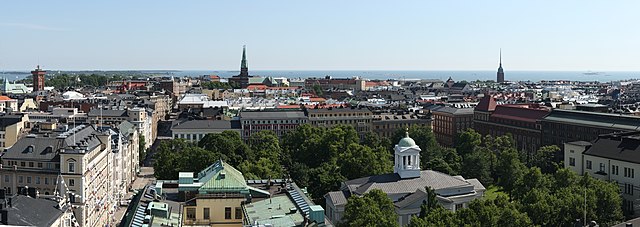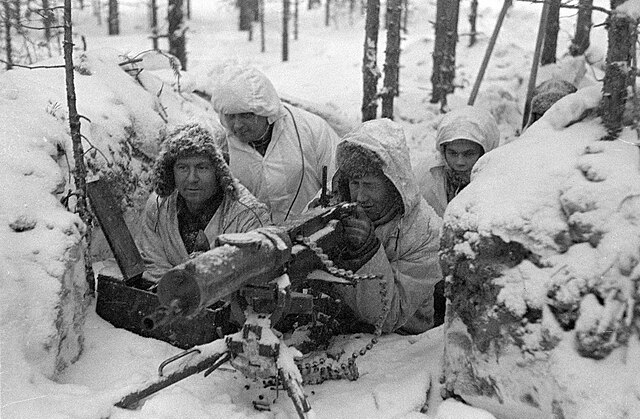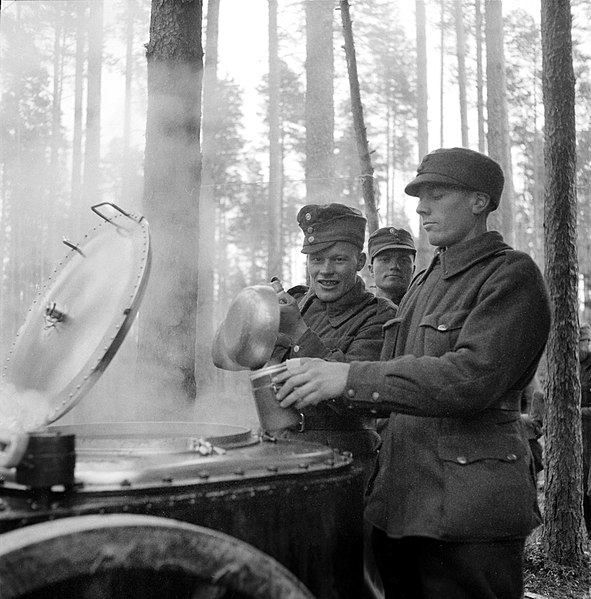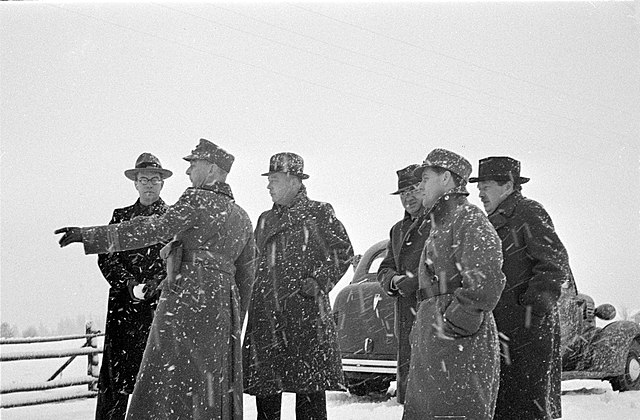The economy of Finland is a highly industrialised, mixed economy with a per capita output similar to that of western European economies such as France, Germany, and the United Kingdom. The largest sector of Finland's economy is its service sector, which contributes 72.7% to the country's gross domestic product (GDP); followed by manufacturing and refining at 31.4%; and concluded with the country's primary sector at 2.9%.
A panoramic view over the southernmost districts of Helsinki from Hotel Torni. The Helsinki Old Church and its surrounding park are seen in the foreground, while the towers of St. John's Church (near centre) and Mikael Agricola Church (right) can be seen in the middle distance, backdropped by the Gulf of Finland.
Aviapolis, Vantaa is one of the most significant growing economic areas in Finland.
A freight train departing from a pulp mill in Äänekoski.
Aleksanterinkatu, a commercial street in Helsinki.
The Winter War was a war between the Soviet Union and Finland. It began with a Soviet invasion of Finland on 30 November 1939, three months after the outbreak of World War II, and ended three and a half months later with the Moscow Peace Treaty on 13 March 1940. Despite superior military strength, especially in tanks and aircraft, the Soviet Union suffered severe losses and initially made little headway. The League of Nations deemed the attack illegal and expelled the Soviet Union from its organization.
A Finnish Maxim M/09-21 machine gun crew during the Winter War
The Soviet–Finnish Non-Aggression Pact was signed by Aarno Yrjö-Koskinen and Maxim Litvinov in Moscow 1932.
Finnish soldiers gather breakfast from a field kitchen during "additional refresher training" at the Karelian Isthmus, on 10 October 1939.
29 November 1939, foreign journalists at Mainila, where a border incident between Finland and the Soviet Union escalated into the Winter War.








